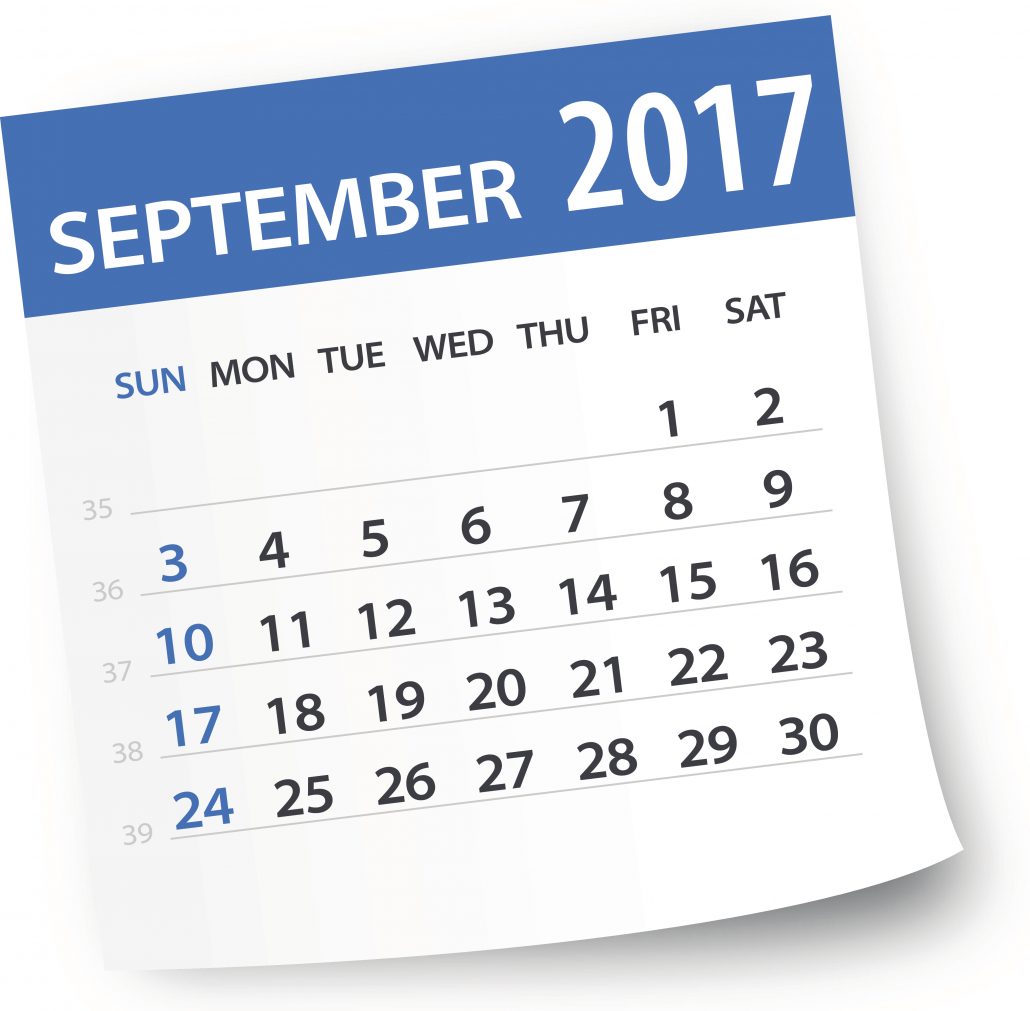by Sher Delva | Sep 5, 2017 | Addiction, Addiction Stigma, Addiction Treatment

September 2017 marks the 27th anniversary of National Recovery Month. The purpose of National Recovery Month is to increase awareness of mental and substance use disorder and celebrate people who DO recover.
The theme for National Recovery Month 2017 is: Join the Voices for Recovery: Strengthen Families and Communities.
This year’s theme highlights the value of family and community support. National Recovery Month invites individuals in recovery and their family members to share their personal stories and successes to inspire and encourage others.
The Purpose of National Recovery Month 2017
The Substance Abuse and Mental Health Services Administration (SAMHSA), within the U.S. Department of Health and Human Services (HHS), is sponsoring National Recovery Month.
Back in 1992, Congress established SAMHSA to help make information and services more accessible to those in need of assistance.
SAMHSA Strategic Initiatives have various purposes, including:
- Providing resources for people with mental and substance use disorders
- Supporting the families of those struggling with mental and substance use disorders
- Building resilient and supportive communities
- Promoting prevention of costly behavioral health problems
National Recovery Month’s overall goal is to educate Americans that addiction treatment and mental health services can enable those struggling to live a healthy and rewarding life.
National Recovery Month sends the message that:
- Treatment is essential and effective
- Prevention does work
- People can and do recover
Every September, thousands of prevention, treatment and recovery programs host events and activities intended to educate the public about recovery. There are millions of lives who have been transformed through recovery. National Recovery Month is about raising awareness of the treatment programs out there. It is also about celebrating the successes of those who have recovered.
Broward Recovery Month Celebration
If you live in the South Florida area, you should consider attending a SPECIAL event occurring in Broward County.
Broward’s Recovery Month Celebration: “honors outstanding individuals who have made significant contributions to helping people in our county remain sober.”
Broward Recovery Month invites you to attend a special recovery event on September 9th at the War Memorial Auditorium. The event will occur from 11 – 3 and there will be food, fun, and inspiration for all. Special guest speakers Heidi and Dug McGuirk will be speaking at this year’s event. Please see our recent article for more information.
The Importance of National Recovery Month
Overall, the mission of National Recovery Month 2017 is to show Americans that addiction and mental illness are not life sentences. There is support out there. There are millions of Americans who have sought treatment and have recovered. Furthermore, through education, we can prevent these conditions from becoming worse. Awareness is the key.
The message that recovery CAN happen changes the face of addiction from one of hopelessness to one of possibilities and success.
There is a way out. Often, the media focuses on those struggling with addiction, however, there are plenty of recovering addicts who have managed to lead successful healthy lives. These successes tend to go unnoticed.
National Recovery Month 2017 helps spread the message of recovery and acknowledge these accomplishments. If someone you know is struggling with addiction or mental illness, give us a call. There is a way out and we can help. Do not wait. Call toll-free today.
CALL NOW 1-888-922-5398
by Justin Mckibben | Sep 1, 2017 | Coping Skills, Family, Inpatient Treatment, Recovery, Self Improvement

The devastating path of Hurricane Harvey has caused unprecedented and catastrophic flooding throughout southeastern parts of Texas. The Lone Star State has been all over the news since the tropical cyclone touched down, becoming the first major hurricane to make landfall on American soil since Wilma in 2005.
Some areas received over 40 inches of rain in a 4 day period, with peak accumulations reaching as high as 51.88 inches. The flooding and damage from the storm has besieged hundreds of thousands of Texan homes, displacing over 30,000 people.
Since its initial landing in Rockport, Texas there are reports of at least 46 confirmed deaths.
Sadly, the tragedy is not yet over. As efforts continue to pour in to relieve the suffering communities, Brock Long calls Hurricane Harvey the worst disaster in Texas history. Long says the expectation of recovering from this destructive natural disaster will take many years.
Still, there is hope. Houston Mayor Sylvester Turner is telling the world that they are happily on the road to recovery. Turner states:
“We’ve turned a corner,”
Yesterday the Mayor also noted there are already numerous signs of hopeful progress, including:
- Declining shelter numbers
- Power restored to most of the region
- The Astros’ doubleheader on Saturday
- More Metro bus lines resume service Friday
- Shipping channel reopening on limited basis
Leave it to the state where they do everything bigger to have such an inspiring bounce back after facing such difficulties. Our thoughts and prayers are with everyone where the motto is friendship and the country is uniting to help those in need.
As the nation pulls together during a time of crisis, so too must an individual pull their own personal resources into maintaining their mental, emotional and physical well-being in the face of disaster. So to add more to the conversation, we want to talk about 5 ways to stay sober during a natural disaster.
The news of another possible threat in the form of Hurricane Irma has been worrying many communities, while there has yet to be a definite answer as to whether or not it will make landfall in the United States, and if so- where.
So let us talk about something that is important for those in the recovery community to keep in mind.
Trauma and Relapse
We want to point out that because natural disasters can be traumatizing experiences, they can put some who are struggling to overcome addiction in a more compromised position. These events stir up anxieties concerns important parts of life, like:
- Personal security
- Physical health
- Relationships
- Psychological well-being
Even healthy people with no history of substance use disorder are frequently traumatized by these sudden and uncontrollable events.
Therefore, it only makes sense that some who are unequipped with healthier coping mechanisms will often turn to trying to escape these fears with drugs or alcohol. It is their natural defense.
Some may find that the traumatic event itself does not inspire cravings, but the aftermath is far more influential. Survivors of natural disasters may be more vulnerable to relapse as they struggle to cope with what has happened.
5 Ways to Stay Sober During a Natural Disaster
-
Have a network
One way that people are able to stay sober during a natural disaster is that they have a strong network of reliable friends, other individuals in recovery and even sometimes counselors they can stay in contact with. Keep your A-team on speed dial and stay in touch with them, even when the disaster is over.
-
Keep honest
This is pretty much always crucial, but we should emphasize it because too many people will overlook it when it matters the most. Stay honest with those around you about your emotions and how the disaster has affected you, especially when you are feeling like you are in a bad place.
-
Maintain a routine
Having a routine, even in the face of tremendous difficulties, can help you to retain some semblance of normalcy while dealing with a tragedy. When trying to stay sober during a natural disaster you may find comfort and coping skills in the simple things like taking care of your hygiene, exercising or even meditating. Have a healthy routine to fall back on when the dust settles.
-
Help others
Helping others is already a huge part of continued sobriety for a lot of people. Many recovery programs promote a life-style that suggests helping others and being of service. Do what you can to be there for those around you, and your community. However, always remember to take care of yourself as well. Don’t push yourself too far and avoid putting yourself in danger.
-
Find a support group
While support groups already exist for those in recovery, sometimes they are especially useful with trying to stay sober during a natural disaster. Don’t rush out in the midst of something dangerous trying to get to a meeting, but immediately after the traumatic events seek out a support group or some form of counseling to help you process the tragedy. Even if you don’t feel specifically vulnerable at the time, it is healthy and productive to try and connect with others in a time of crisis.
In fact, if not for you… do it for them.
There is often no way to predict how something so damaging will show up in your life and what it may do to you physically, mentally or emotionally. Yet, having an effective strategy in place might help you be ready for anything.
Do everything you can to make sure that you stay sober during a natural disaster, so that one tragedy doesn’t create another in your life.
Stay safe everyone!
In the face of great adversity and turmoil we are gifted the opportunity to be better than our anxieties and our traumas. Staying sober during a natural disaster may not seem as important as just staying alive, but for some of us it is essentially the same. If you or someone you love is struggling with substance abuse or addiction, please call toll-free now. We want to help. You are not alone.
CALL NOW 1-888-922-5398
by Sher Delva | Jul 27, 2017 | Addiction, Addiction Medicine, Addiction Stigma, Stigma, Therapy, Withdrawal

(This content is being used for illustrative purposes only; any person depicted in the content is a model)
Barbara Harris believes drug addicts should not have children, and she’s using cash incentives to ensure they never do.
For the last 20 years, Harris has driven across the country in a branded RV advertising her non-profit to drug addicts and alcoholics.
Her mission? To reduce the number of children born addicted to drugs and alcohol.
Her nonprofit, Project Prevention, pays substance abusers up to $300 to get sterilized or put on long term birth control like an implant or IUD. Those who get sterilized receive a lump sum and those who opt for less permanent birth control options get their payments in smaller installments.
To date, Harris’s organization has paid more than 7,000 people, mostly women, to give up their fertility. Project Prevention only pays the addicts and leaves the sterilizations and birth control procedures to doctors.
Harris believes the cash incentive is stopping a major societal problem in its tracks:
“We’re preventing women who are strung out on drugs and alcohol from conceiving a child,” Harris says. “Nobody has a right to force-feed any child drugs and then deliver a child that may die or may have lifelong illnesses.”
Drug and alcohol use during pregnancy can result in a host of medical complications. The use of heroin and narcotic painkillers like OxyContin, Vicodin, or morphine can cause bleeding within the brain (intracranial hemorrhage) and even infant death.
Neonatal Abstinence Syndrome (NAS) is defined as: “a group of problems that occur in a newborn who was exposed to addictive illegal or prescription drugs while in the mother’s womb,” according to Medscape.
- Every 25 minutes, a baby is born suffering from extreme withdrawal symptoms from the heroin, painkillers, or cocaine their mothers continued using throughout pregnancy.
- The numbers of babies born addicted to drugs have quadrupled between 2004 and 2013.
- In 2013, 27 babies out of every 1000 were born dependent on narcotics.
- These babies suffer from withdrawal symptoms like irritability, convulsions, sleep abnormalities and joint stiffness.
- Often, these babies must be sent to intensive care units where doctors help wean them off the drugs.
- It is taking longer to wean addicted babies off drugs such as heroin and mephedrone. On average, babies now spend their first 19 days – up from 13 days – in the Neonatal Intensive Care Unit.
- In 2015, the average overall cost of a newborn suffering from NAS was found to be between $159,000 and $238,000, and these numbers are expected to continue to rise.
In terms of alcohol consumption during pregnancy, fetal alcohol syndrome is another tragic outcome. Fetal alcohol syndrome can seriously harm the development of a baby during pregnancy, both mentally and physically. These effects can last throughout a child’s life.
FAS harms a baby in many ways including:
- Birth defects
- Vision or hearing problems
- Low birth weight
- Learning disabilities
- Speech and language delays
- Behavioral problems
- Growth deficiency
- Death
Some say Harris’s Organization Raises SERIOUS Ethical Questions
Harris’s mission to reduce these pregnancies seems straightforward. However, many feel her organization raises serious ethical questions. One question posed is whether she is taking advantage of addicts during their most vulnerable time.
A major critic of Project Prevention is Lynn Paltrow, Executive Director of National Advocates for Pregnant Women. She’s been a critic of Harris’s work for over 20 years.
“Barbara Harris greatest impact is in perpetuating really destructive and cruel myths about pregnant women and their children,” Paltrow says.
Paltrow believes Harris’s organization does more harm than good and does not address the underlying problems of poverty, lack of access to healthcare and stress created by racism have on these women. Instead, she feels Harris’s organization does nothing more but promote stigma.
“When you talk to the medical researchers, the great news is that none of the criminalized drugs cause unique permanent terrible damage,” Paltrow says. “Three percent of all women give birth to babies that have what are called serious birth defects. None of that has anything to do with the criminalized drugs.”
Another strong critic featured is Mary Barr, a former addict who believes what Harris is doing is wrong. Barr has two children who were born healthy despite her drug use.
“I have two children who are incredibly healthy, were born healthy, they’re 26 and 25, and they’re very amazingly successful,” she says.
When asked if she would have taken up on Harris’s offer at the height of her addiction, she says she would have.
“I would have taken it because $300 all at once, that means for me, three nights of sleeping indoors,” she says referring to her predicament back then.
Is Project Prevention Denying Addicts a Second Chance?
Despite the controversy, Harris believes what her organization is doing is the right thing for the children. She does not believe she is promoting sterilization. Instead, she says what she offers is a choice.
“We don’t promote sterilization, that’s their choice. They got strung out; they decided they wanted $300 to sterilize themselves, and if it’s a decision they regret, it was a decision they made just like prostituting and ending up with AIDS,” she says.
One of the reasons Harris is so passionate about this is because she adopted and raised four children from the same mother who used drugs throughout her pregnancy. She wants to prevent other children from being born in the same situation.
“I watched how my children suffered and had to withdraw from drugs when they were born so no, I wasn’t thinking about ‘These poor women,’ I was thinking ‘My poor children,’” she says.
“I always say to them if you believe that strongly that these women should keep conceiving children then you should step up and adopt the next one born, but most of the people who have a problem with what we’re doing would never consider adopting one of these children, so if you’re not part of the solution, you’re part of the problem,” she concludes
Overall, like most harm reduction programs, this solution is controversial. There are many addicts who have recovered and gone on to have and raise children. Sadly, there are children born every day addicted to drugs and alcohol, and the consequences are real. Harris’s organization receives over $500,000 in funding every year. Clearly, there are many on her side when it comes to providing this option.
What are your thoughts? Does a program like this promote stigma or offer a solution? Either way, please do not continue to let your addiction take over your life. You deserve the opportunity to live a healthy and satisfying life. If you or someone you love is struggling with substance abuse or mental illness, please call now 1-800-777-9588.
CALL NOW 1-888-922-5398




